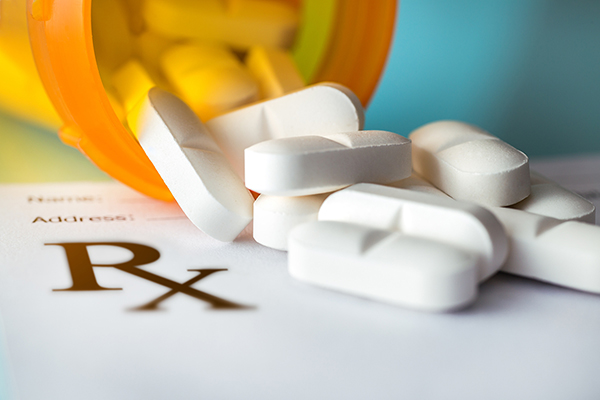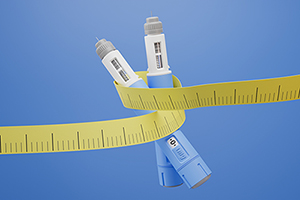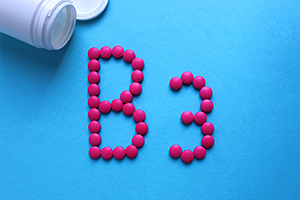



| By Dr. Ronald Hoffman

There are times when you just need an antibiotic. Think pneumonia, a serious skin infection, a urinary tract infection, or Lyme Disease. Yes, they’re overused for self-limited conditions like mild acne, bronchitis, ear infections, and sinusitis, but they’re sometimes necessary.
We know they can be harmful. Excessive use can lead to antibiotic resistance. Antibiotics can disrupt the microbiome, often with long-term consequences, not just for digestion, but for the whole body (“What happens in the gut doesn’t stay in the gut”).
Antibiotic use is known to disrupt metabolism, increasing the risk of insulin resistance and weight gain, as well as lowering immunity and predisposing to allergic diseases like asthma. Women are familiar with the frequent side effect of vaginal yeast infections. Both sexes are prone to oral thrush. And, of course, there’s the dreaded antibiotic side effect of c. Dificile infection causing diarrhea and even pseudomembranous colitis.
Some antibiotics are notorious for affecting hearing, others for damaging the kidneys, still others (like Cipro and Levaquin) for causing painful tendons and even ruptures.
There are even new warnings about the potential for Cipro to provoke aortic dissections or ruptured aneurysms. The FDA issued a revised warning “that these effects may be permanent and disabling and may involve multiple body systems.” Labels will also list an expanded range of serious potential side effects, ranging from skin rashes to hallucinations.
These widespread harms suggest something’s going on besides mere disruption of intestinal bacteria. In a much-neglected paper from 2013, researchers finally put their fingers on it: Entitled “Bactericidal Antibiotics Induce Mitochondrial Dysfunction and Oxidative Damage in Mammalian Cells” the study authors write:
“Prolonged antibiotic treatment can lead to detrimental side effects in patients, including ototoxicity, nephrotoxicity, and tendinopathy, yet the mechanisms underlying the effects of antibiotics in mammalian systems remain unclear. It has been suggested that bactericidal antibiotics induce the formation of toxic reactive oxygen species (ROS) in bacteria. We show that clinically relevant doses of bactericidal antibiotics—quinolones, aminoglycosides, and β-lactams—cause mitochondrial dysfunction and ROS overproduction in mammalian cells. We demonstrate that these bactericidal antibiotic–induced effects lead to oxidative damage to DNA, proteins, and membrane lipids. Mice treated with bactericidal antibiotics exhibited elevated oxidative stress markers in the blood, oxidative tissue damage, and up-regulated expression of key genes involved in antioxidant defense mechanisms, which points to the potential physiological relevance of these antibiotic effects. The deleterious effects of bactericidal antibiotics were alleviated in cell culture and in mice by N-acetylcysteine.”
This, of course, makes perfect sense if we pay attention to the evolutionary origins of animal cells. Billions of years ago, in the primordial soup, primitive one-celled organisms formed a partnership with bacteria. The bacteria, newly-incorporated within the cells, became the precursors to mitochondria, the powerhouses of all modern animal cells.
It’s therefore understandable that antibiotics, which target bacteria, may cause collateral damage to mitochondria!
The take home from this research is that, since the toxicity is mediated by free radicals, our cells can be shielded from oxidative stress by antioxidants. And sure enough, the researchers demonstrated that N-acetylcysteine (NAC), a readily-available over-the-counter supplement, conferred protection against free radical damage caused by antibiotics.
Therefore, if you need to take an antibiotic, you would be well-advised to take NAC 500-600 milligrams three times daily during and for a short time after antibiotic administration. It’s highly likely, but not confirmed, that taking companion antioxidants like selenium, zinc, vitamin C, mixed carotenoids, and mixed tocopherol vitamin E would enhance the benefits of NAC. And since NAC is a precursor to glutathione, a bio-available liposomal glutathione supplement might be called for. Another option might be RegActiv, an innovative probiotic capable of generating glutathione within the GI tract.
What else should you do to mitigate the effects of antibiotics?
Taking yogurt or a probiotic supplement during antibiotic therapy is often recommended to offset depletion of your intestinal flora. But studies are mixed on the efficacy of that strategy. One comprehensive reviewstates: “With the current data at hand, it is difficult to draw any solid conclusion about the prophylactic use of probiotics in antibiotic-associated diarrhea.”
With so many probiotic formulas out there, it’s hard to draw general conclusions about their efficacy. But one probiotic stood out: “Of the 10 controlled trials in adults using Sacchromyces boulardii, 8 (80%) showed significant efficacy for the prevention of antibiotic-associated diarrhea.”
Another strategy that’s been suggested to boost the efficacy of antibiotics for deep-seated or resistant infections is the simultaneous use of proteolytic enzymes like Wobenzym. Studies suggest they may help “unmask” tenacious bacteria by digesting away the biofilms that protect them and allowing antibiotics to penetrate deeper. 3-5 tablets 3 times daily away from food is the generally recommended dose of Wobenzym for this purpose.
Are there any supplements that shouldn’t be used while on antibiotics? That depends on what medication you’re taking. It’s generally acknowledged that tetracycline family antibiotics should not be taken with calcium, magnesium or strontium supplements which interfere with their absorption. B vitamins are also said to reduce the effectiveness of the tetracycline family of antibiotics. On the other hand, the B vitamin folate may be depleted in patients taking Bactrim for long periods and should be supplemented.
Some antibiotics like Keflex and Ceclor are known to deplete vitamin K; users should consider taking a vitamin K supplement to avoid blood-thinning which can result in easy bruising and hemorrhages.
Use the drug-supplement interaction checkers at Medscape or Integrative Therapeutics to check compatibility between your antibiotic prescription and the supplements you take. Some combinations may be beneficial; others to be avoided. Note that there may be disagreement depending on the source—that’s because the research is sometimes inconclusive or even contradictory when it comes to antibiotic-supplement interactions!
Though we think of declining estrogen as the hallmark of menopause, it's actually common for…

Up to 12 percent of Americans have ulcers at some point in life. Peptic ulcers…
Gallbladder disease is a modern illness. An estimated 20 million Americans have gallbladder disease. The…

New, more powerful weight loss drugs: Drugs like Wegovy, Rybelsus, Ozempic and Mounjaro/Zepbound are revolutionizing…

According to the Lancet, autoimmune disease affects one in ten people globally and it’s now…

This past week we were regaled with headlines like: High levels of niacin may increase…

Leyla Weighs In: The Erosion of Trust in Nutritional Research

Our virtual voicemail is open 24/7, so there's no need to wait to submit your questions for Dr. Hoffman. Leave a message, and you may hear your question featured on the Intelligent Medicine radio program!